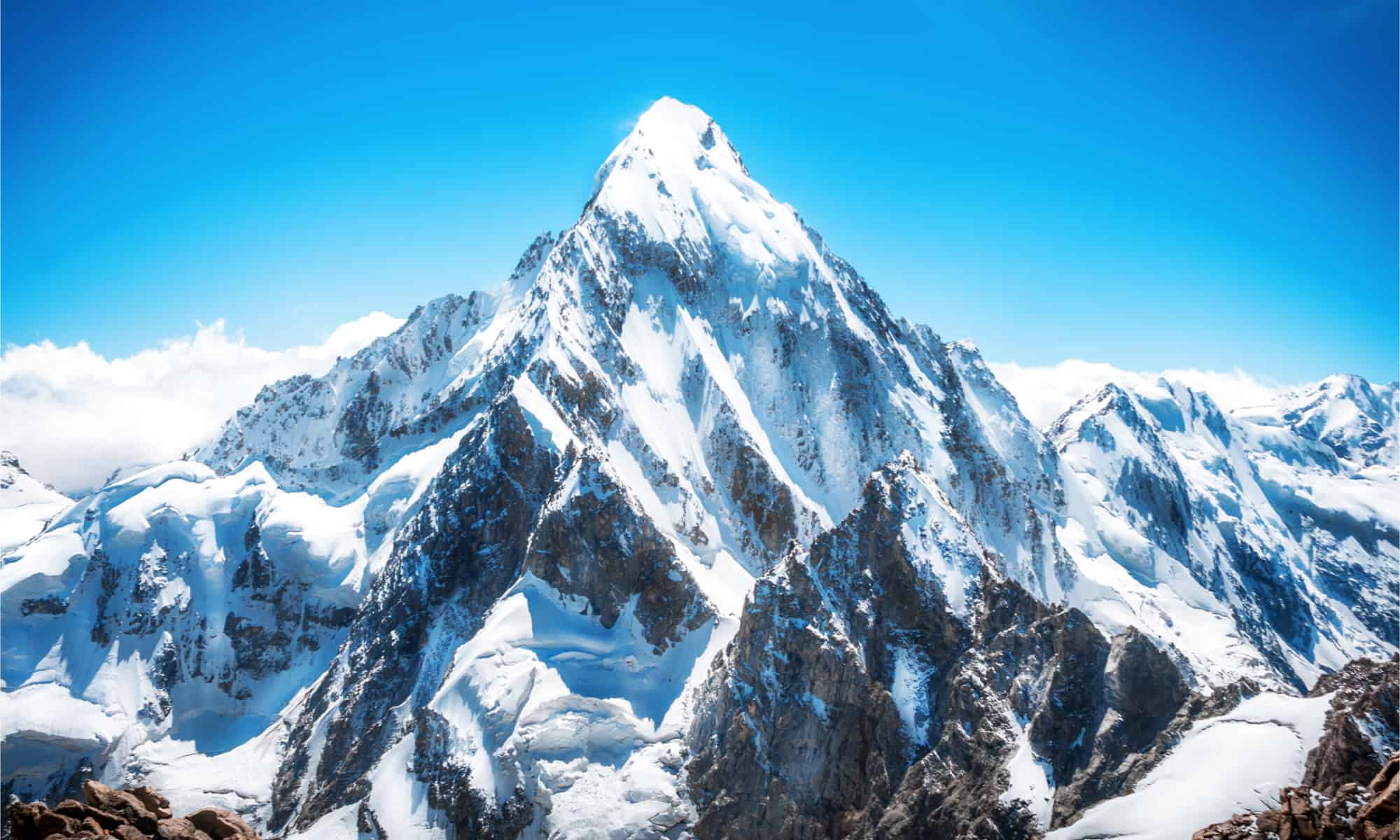Mount Everest is the world’s highest mountain standing at a whopping 29,031 feet above sea level. It is nestled between Nepal and Tibet, a region in the central part of East Asia. The mountain is not only majestic but also incredibly dangerous to mountaineers brave enough to climb it.
Although Mount Everest is known for many things, the mountain’s infamous “death zone” is almost always a topic of discussion. So, what is Mount Everest’s death zone and why is it so dangerous? This article has the answers.
What Exactly Does “Death Zone” Mean?

Mount Everest is located in the
Himalayan
mountain ranges.
©bodrumsurf/Shutterstock.com
The term “death zone” is commonly used to describe the part of incredibly high mountains with a lower level of oxygen that cannot sustain human life. Death zones occur on mountain summits at high altitudes above 26,000 feet. Mount Everest is not the only mountain with a death zone, as there are about 13 other mountains with similar zones. Those types of mountains are usually found in the Himalayan and Karakoram ranges in Asia.
About Mount Everest’s Death Zone
As the highest mountain in the world, Mount Everest’s death zone begins as you near its peak. The mountain’s death zone starts at 26,000 feet and extends to the summit for the next 3,031 feet. Atmospheric pressure decreases at higher altitudes. The death zone in question has less than 356 millibars.
When atmospheric pressure starts dropping, so does oxygen saturation. Mount Everest’s death zone offers less oxygen than humans require to survive. The mountain death zone has unfortunately taken the lives of many people, even expert mountaineers with years of training.
This dangerous death zone is covered in thick snow and reaches frigid temperatures averaging -4 to -40 degrees Fahrenheit. Mountaineers not only face low oxygen conditions during their climb but also freezing temperatures that could make them hypothermic if they are not prepared.
The rocks of Everest’s summit are made of limestone and fragments of marine invertebrates. These rock materials are believed to have formed over 400 million years ago during the Ordovician Period.
How Can You Tell When You Enter Mount Everest Death Zone?
Aside from experiencing the devasting effects of a low-oxygen environment, there are other ways to determine whether you have entered Mount Everest’s death zone. Due to the extreme conditions in that area, numerous people have died there, creating an “open graveyard”.
The bodies of deceased mountaineers who braved the Mount Everest climb are often left behind on the mountain as retrieving them is too dangerous. Most of the time, their corpses do not decompose fully and remain frozen solid in the zone’s freezing temperatures. These corpses often haunt mountaineers hoping to reach Mount Everest’s summit without facing the same fate. As gruesome as it sounds, some mountaineers have to climb over the corpses to carry on their way when snow cover is light.
Why Is Mount Everest’s Death Zone So Dangerous

Although climbing this huge mountain sounds like a promising challenge, it is incredibly dangerous.
©Martin Gillespie/Shutterstock.com
People have climbed and explored the mountain ever since the first people to reach the summit, Edmund Hillary and Tenzing Norgay, made the victory climb in 1953. Climbing Mount Everest can be viewed as a triumph, whether for others or for yourself as a personal victory. However, that does not make entering the death zone any less dangerous.
One of the main reasons Mount Everest’s death zone is so dangerous is due to the low oxygen saturation. Humans are not able to survive in low oxygen conditions for very long, as our bodies cannot function properly. This ultimately leads to death.
People can die in the mountain’s death zone in numerous ways, such as from heart attacks, strokes, hypoxia, and lung edemas. Deaths have also occurred from avalanches, falls, frostbite, and brain edemas in the death zone. Acute mountain sickness (altitude sickness) is another danger mountaineers face if their bodies struggle to adjust to different altitudes.
The extreme conditions on this famous mountain put climbers at risk of hypothermia and overexertion, making them more likely to fall or struggle to continue their journey up or down the mountain.
Conclusion
Although many people are intrigued by the Mount Everest death zone and the challenge that comes with reaching the mountain summit, it is incredibly dangerous. Everest poses various risks to mountaineers, and the death zone is just one of the mountain’s many challenging areas.
Thank you for reading! Have some feedback for us? Contact the AZ Animals editorial team.








